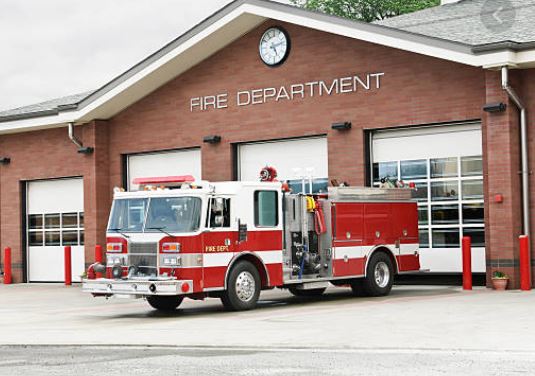By Samuel Strait, Reporter at Large – May 9, 2021
In the course of the past week much was learned about what occupies
nearly all current fire districts, dwindling resources, both material
and financial, diminishing numbers of volunteer firefighters, additional
burdens of regulation, and a distinct change in what is meant for fire
districts to be responsible for when the fire alarm rings. It almost
can be said that the moniker above the firehouse door should now be
changed to read “Medical Emergencies, Incident Reports, and an
Occasional Response to Fire District.” Long gone are the days where
most calls to the firehouse were related to a burning building or fire.
Fully 85% plus of all calls to fire districts nation wide are other than
fire related incidents, and our local fire district reporting matches or
exceeds that figure. These numbers range from near 85% at the Crescent
Fire Protection District to near 95% in the Klamath’s Fire Protection
District.
This is not something that has recently appeared at firehouses nation
wide, but recognition of this new kind of role for firehouses became
noticeable all the way back in 1973 when financial resources for fire
departments were being outstripped by yearly budget increases. Many
departments and fire districts have not been able to adjust their
programs to accommodate this new reality and here locally, despite
admitting that this is a reality, have had great difficulty making the
complete transition from traditional firehouses with large inventories
of fire engines to the new reality of multiple and less costly RRVs
(Rapid Response Vehicles) which are less costly and more effective in
assisting the public where less is better.
Traditional fire engines fully equipped can range in cost from $850,000
to well over a million dollars. RRV’s (the smaller versions) on the
other hand can find a fire department laying out from $150,000 to a mere
$50,000, with fully equipped engine sized model at $300,000. Having
multiple RRV’s scattered at the County’s thirteen fire stations and
reserving larger fire equipment at strategically located stations would
dramatically reduce costs, reduce maintenance on district fire engines,
and reduce the number of crew required to travel to non fire related
incidents where the larger engines are not necessary. A number of fire
districts and departments have elected to travel this path and report
significant savings, the reduced need for top heavy personnel (able to
eliminate many Asst Chiefs, Fire Captains, Battalion Chiefs and other
high dollar employees), lower maintenance on fire engines, and a more
appropriate level of service at incident responses.
To a certain degree our local fire districts already for the most part
have this capability, but do not appear to be utilizing it to its full
potential. Asking fire district parcel owners to support employing
three fire captains who would likely be underutilized and costly to the
district, talking about new fire engines, and an expanded fire fighting
cadre of volunteers seems to be taking steps back to the traditional
role of a fire department rather than the new reality of substantially
higher call incident of non fire related emergencies. This has led to
the unsupported call for new parcel assessments to encumber parcel
owners in the fire protection district, for which also is a failing many
tax supported agencies resort to when much more responsible alternatives
are available.
This call for fire departments to be more responsive to the nature of
their changing role has met considerable resistance by many in the fire
fighters community and led to the continuation of over the top response
to most incidents which clearly are unnecessary and have become cost
prohibitive. It has become ingrained in both the public and fire
fighting communities that fire protection is absolutely essential, but
that needs to change with the new reality of what a fire district is
called on to accomplish. Clearly the majority of calls are Medical in
nature with fire coming well down the list. Rapid response is
important, it just should be the right kind of response. Indisputably
this has not been Crescent Fire Protection District’s main priority.
Along with this new direction of the fire district should be a focus on
dispatch at the Del Norte County Sheriff’s Department where new methods
of operation at this vital point of an emerging crisis are able to
communicate the exact nature of a call and direct an appropriate level
of response with the precise level of personnel to the scene. More on
this in a future article soon to appear in the pages of the Crescent
City Times your source for important community information.


